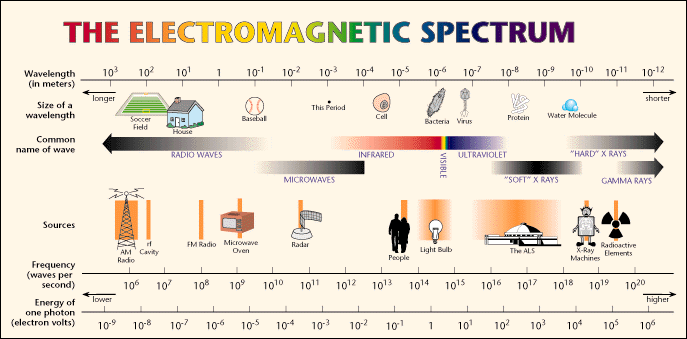By Barry Keate
Barry Keate, has lived with tinnitus over 40 years and has published 150+ research articles on numerous aspects of tinnitus. He is an expert on the condition and a well-known advocate for those with tinnitus.
In the modern world we are bombarded with electromagnetic radiation. For most of us, this may not be a problem. But for people who are sensitive to electromagnetic fields (EMF), the effects can include hypersensitivity, tinnitus, and other serious symptoms.
The scientific world is divided as to whether EMF hypersensitivity is real. Many researchers dismiss it, but several studies show it can affect some people. Here we’ll attempt to make sense of it all.
EMF Radiation Sources
Anything that uses or transports electricity generates an electromagnetic field, including high voltage power lines, household appliances, radios, televisions, cordless telephones, cell phones and towers, computers, and microwave ovens. The frequencies of these fields vary by the source, but most fall within the GHz (gigahertz) ranges employed by cell phones and Wi-Fi systems.

Cells in our bodies generate their own small fields. Neurons (nerve cells) and muscle cells pass information from cell to cell using small electrical charges, or microvoltages. External electromagnetic fields can interfere with these signals.
Self-reported rates of EMF hypersensitivity vary from 1.5% in Sweden, where the condition is officially recognized as a disability, to 3% in Calfornia, 4% in the UK, and 5% in Switzerland. (1)
In Sweden employers and building owners are expected to rectify EMF problems, and sufferers are entitled to disability benefits. The Canadian Human Rights Commission also considers EMF hypersensitivity an environmental sensitivity and a disability.

Negative EMF Hypersensitivity Studies
Two systematic reviews of EMF hypersensitivity were performed in 2005 and 2008. The 2005 review concluded, “Electromagnetic hypersensitivity is unrelated to the presence of EMF, although more research into this phenomenon is required’” (2) The 2008 study found “no evidence that EMF hypersensitive individuals could detect presence or absence of RF-EMF better than other persons.” (3)
These studies both found that participants who claim EMF hypersensitivity were unable to discern when EMF radiation was present and when it was not. I have no way to determine whether these studies were conducted in isolation from background EMF interference; this was not discussed in the abstracts or conclusions. But if they were conducted in hospitals or clinics, the results are problematic. Such facilities are full of equipment which generates electromagnetic fields, from wiring to imaging equipment. Studies should be conducted far away from any background EMF contamination.
Studies Supporting EMF Hypersensitivity
More recent studies connect EMF hypersensitivity with numerous symptoms, prominently including tinnitus. In one study more than half the subjects with self-reported EMF hypersensitivity also reported tinnitus which disrupted sleep and work. (4) Other symptoms included fatigue, nausea, headaches, loss of memory and concentration, skin problems, insomnia, seizures, and dizziness – and perhaps also cancer, ADD, migraines, arrhythmia, and Parkinson’s disease.
An early study by William Rea, MD, and his associates at the Environmental Health Center in Dallas, Texas, found an effective way to evaluate EMF hypersensitivity in patients. (5) In this case, monitoring devices were used to ensure that extraneous EMF would not interfere with the tests.
One hundred patients who complained of EMF hypersensitivity across frequencies ranging from 0 to 5 MHz were tested. Twenty-five patients responded to the presence of fields and did not respond to bogus or empty fields. These were then included in a study, along with 25 volunteers who did not complain of hypersensitivity. None of the volunteers responded to the presence or absence of fields, but 16 of the EMF-sensitive patients (64%) had positive signs and symptoms.
When these 16 patients were then re-exposed to the frequencies to which they were most sensitive in the earlier phase, they detected the presence of EMF 100% of the time, and all of the placebo tests were negative. The test was repeated with the same results. The authors concluded, “This study gives strong evidence that electromagnetic field sensitivity exists and can be elicited under environmentally controlled conditions.”
In a double-blind study where outside electrical fields were strictly controlled, a single female physician, who was self-diagnosed with EMF hypersensitivity, developed temporal pain, headache, muscle twitching, and skipped heartbeats within 100 seconds of exposure to a typical environmental field of 60 Hz and 300 V/m. (6) Turning the field on and off controlled the symptoms. Her somatic reactions to EMF exposure were statistically reliable.
Other Physiological Changes Caused by EMF
In a placebo-controlled study, laboratory rats were exposed to a mobile phone for two hours per day for 45 days. Glutathione and melatonin levels decreased significantly in the exposed group, and free radical activity in the brain increased. (7)
Glutathione is the primary antioxidant within the human body. A deficiency leads to increased free radical activity. Free radicals cause cells in the body to become oxidized and die, and are thought to be the primary cause of aging. Antioxidants reduce and neutralize free radicals, increasing the longevity of both individual cells and the body as a whole.
Melatonin is a hormone produced in the pineal gland. It regulates the sleep-wake cycle, moods, and even the ovarian cycle, and promotes a healthy night’s sleep. It may also protect the body from cancer. It has been found to help tinnitus sufferers who find sleep difficult.
With both glutathione and melatonin depleted, the body ages faster, sleep becomes more difficult, and hormone levels become dysfunctional.
Treating EMF Hypersensitivity
I believe there is ample evidence that some individuals are hypersensitive to EMF radiation, and that some suffer tinnitus as a result. Learning what percentage of the population suffers EMF hypersensitivity and which frequencies are most damaging will require further testing.
Meanwhile, Arches Tinnitus Formula (ATF) may be very helpful for those with EMF hypersensitivity. The Ginkgo biloba and zinc in ATF are powerful antioxidants, and ginkgo increases circulation within the cochlea and protects the delicate hair cells within the inner ear. See our more detailed explanation on the science behind ATF.

The most obvious approach to EMF hypersensitivity is to decrease exposure to electromagnetic fields. It is even possible to escape human-caused electromagnetic fields almost entirely in certain locations. One such sanctuary is Green Bank, West Virginia. Many people hike and camp in a 13,000 square mile US National Radio Quiet Zone, which surrounds a nearby radio telescope. There is no cell phone service or Wi-Fi there; these would interfere with the radio telescope. There are similar refuges in Sweden, France, Italy, Spain, Canada, and Japan.
Other helpful strategies include drinking lots of water; taking vitamins and supplements such as magnesium and vitamins B, C, and D; acupuncture, yoga, Epsom salt baths, removing mercury fillings from teeth, medically supervised chelation, and reduced exposure to metals.
References:
1 – https://www.en.wikipedia.org/wiki/Electromagnetic_hypersensitivity
2 – Rubin GJ, Das Munshi J, Wesseley S. Electromagnetic hypersensitivity: a systematic review of provocation studies. Psychosom Med. 2005 Mar-Apr; 67(2):224-32.
3 – Roosli M. Radiofrequency electromagnetic field exposure and non-specific symptoms of ill health: a systematic review. Environ Res. 2008 Jun; 107(2):227-87.
4 – Landgrebe M, et al. Association of Tinnitus and Electromagnetic Hypersensitivity: Hints for a Shared Pathophysiology. PLoS ONE 4(3): w5026. March 27, 2009.
5 – Rea W, Pan Y, et al. Electromagnetic Field Sensitivity, Journal of Bioelectricity, 10(1&2), 1991, 241-256.
6 – McCarty DE, Carrubba S. et al, Electromagnetic hypersensitivity: evidence for a novel neurological syndrome. Int J Neurosci. 2011 Dec; 121(12):670-6.
7 – Kesari KK, Kumar S, Behari J. 900 Mhz microwave radiation promotes oxidation in rat brain. Electromagn Biol Med. 2011 Dec; 30(4):219-34.
Get Free Shipping!
Order now and get free shipping on either the Tinnitus Starter Kit or Combo Pack. Try the doctor recommended products with clinically proven ingredients for tinnitus. No coupon code required.

